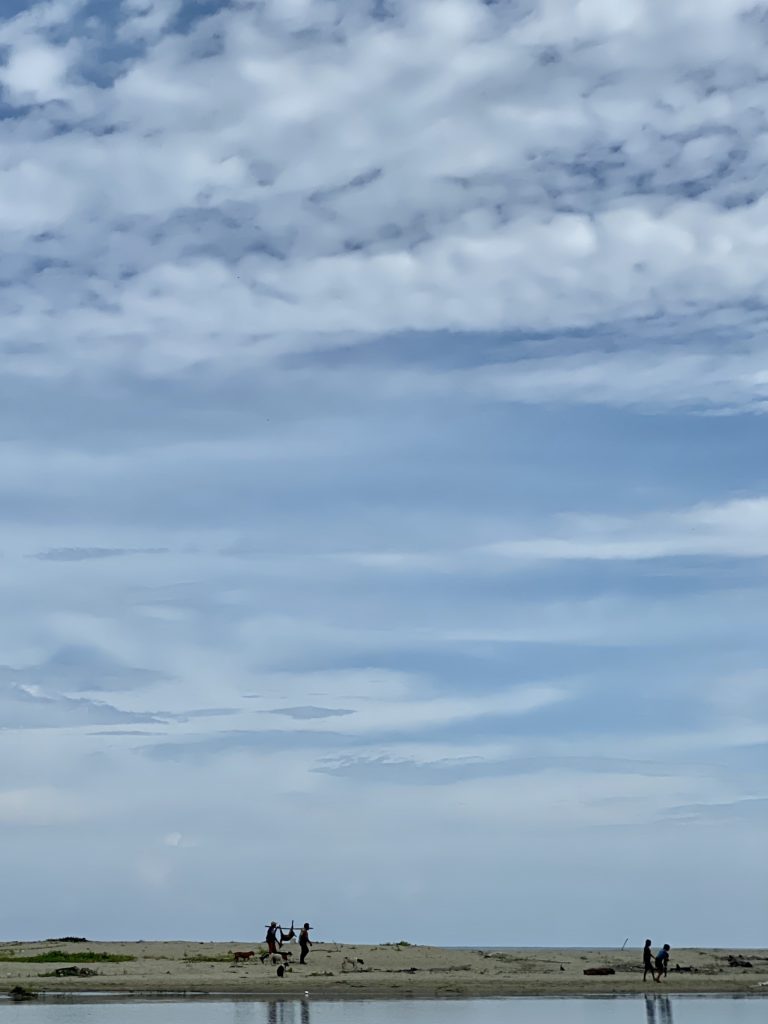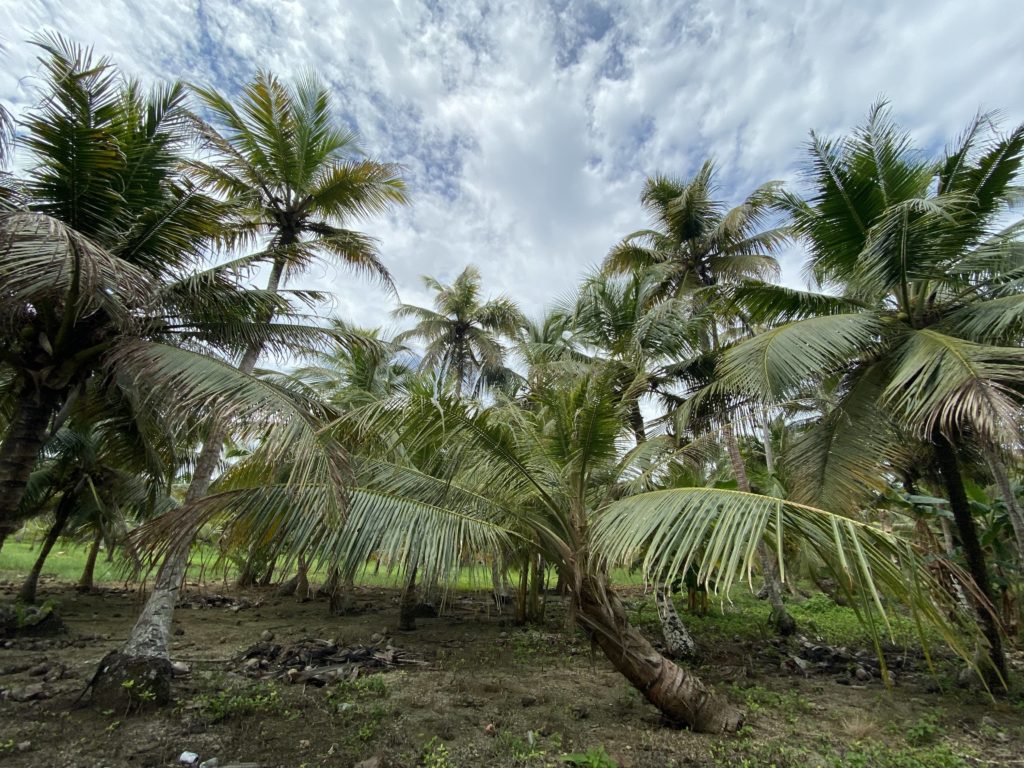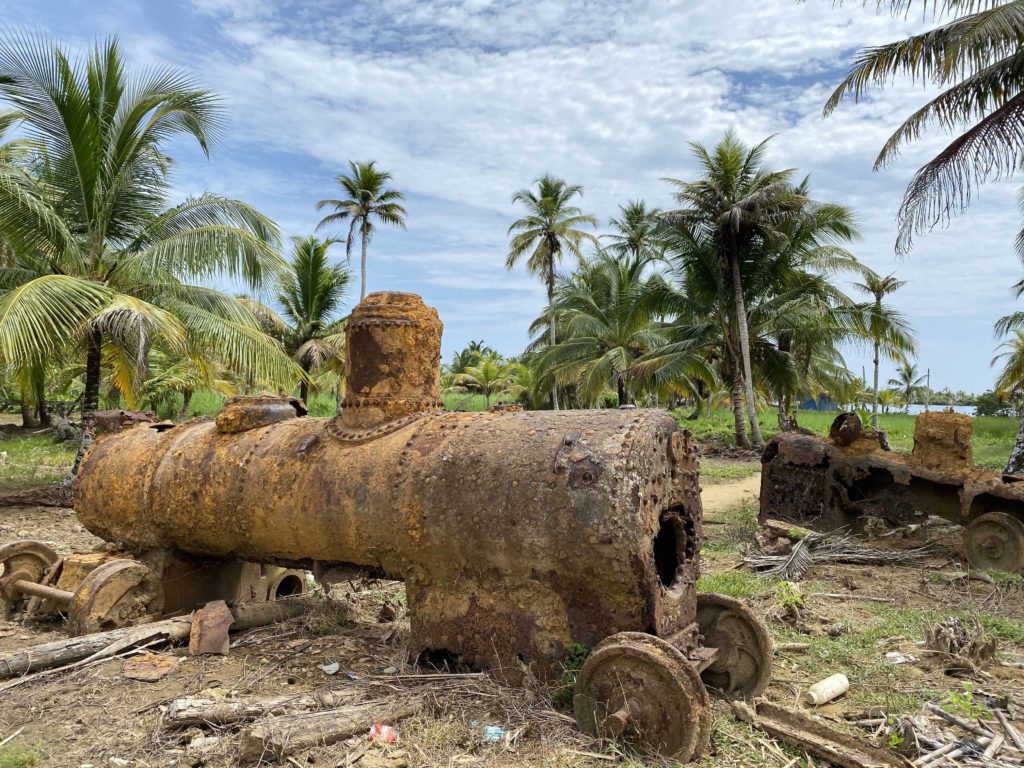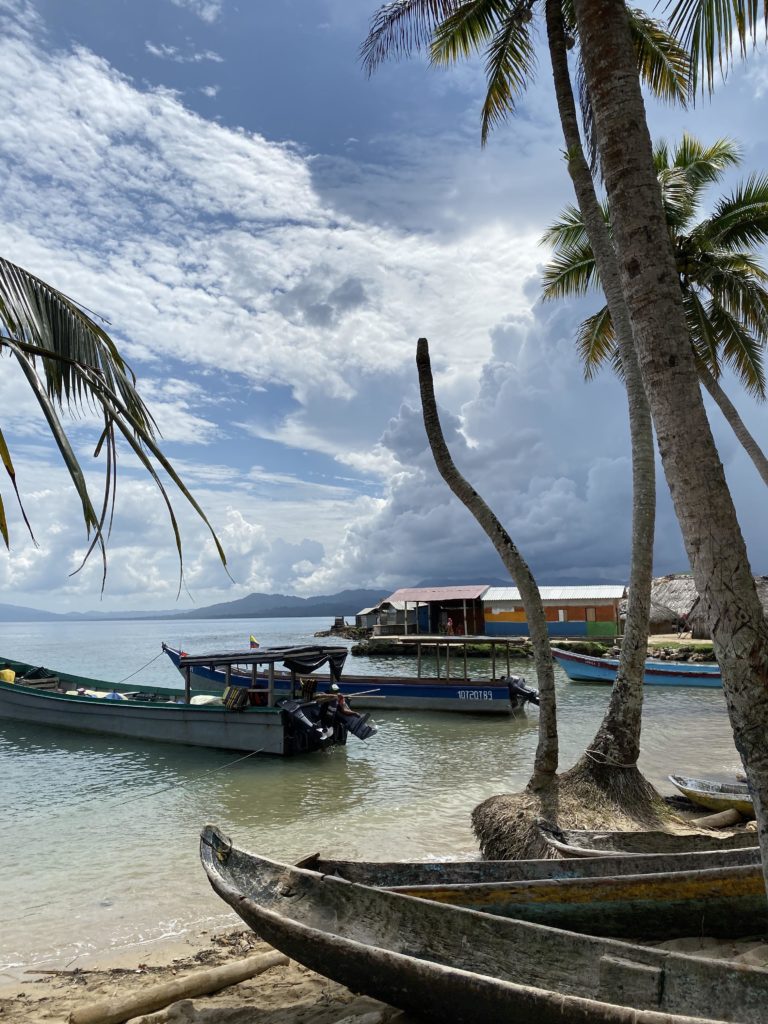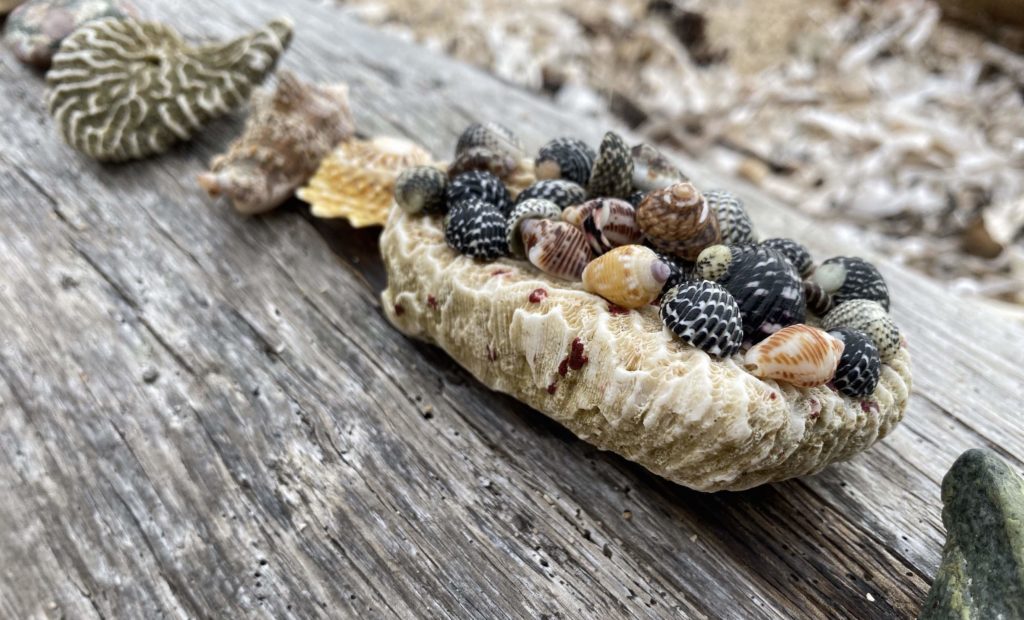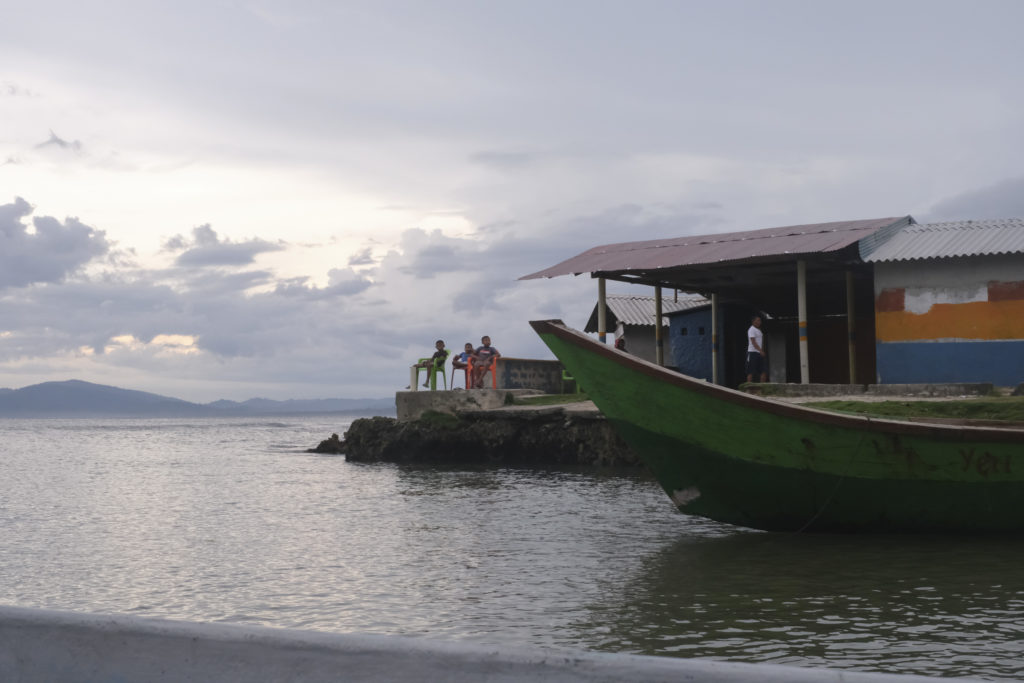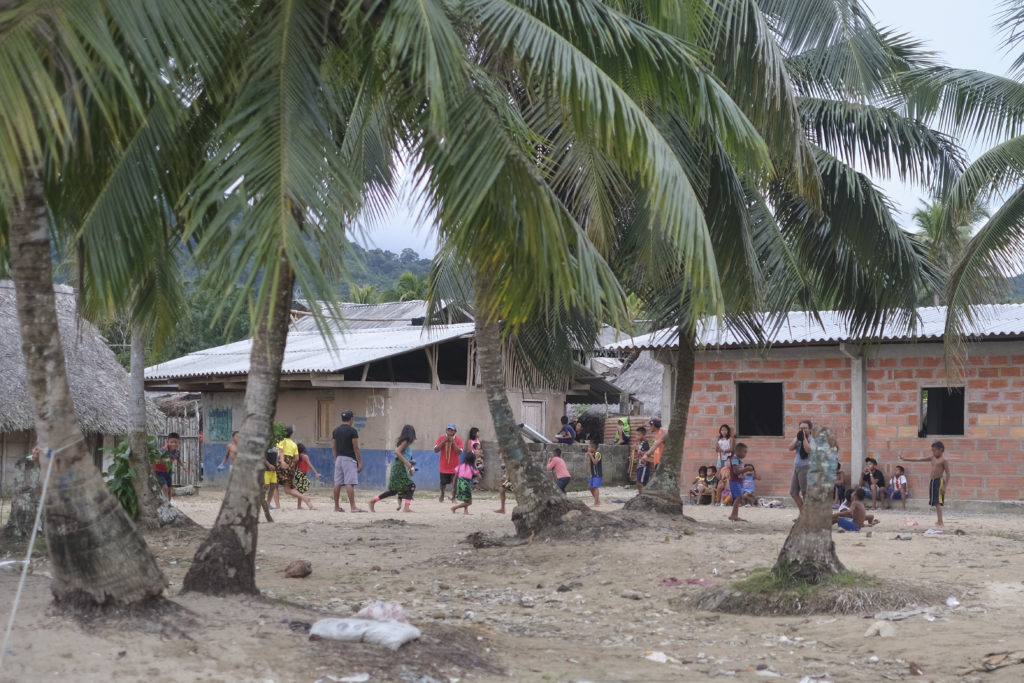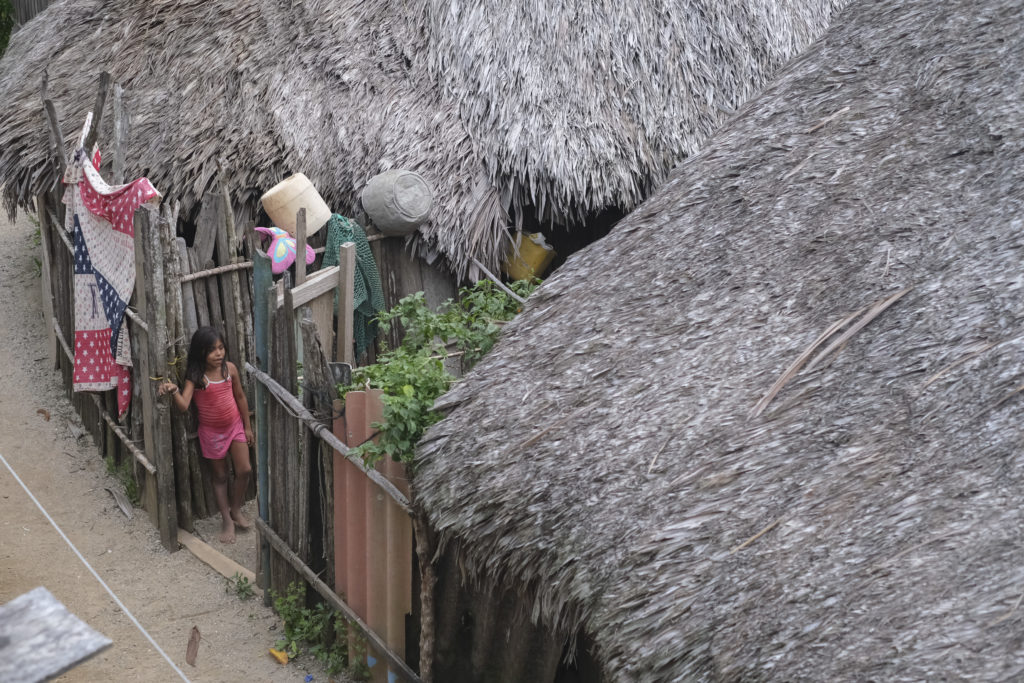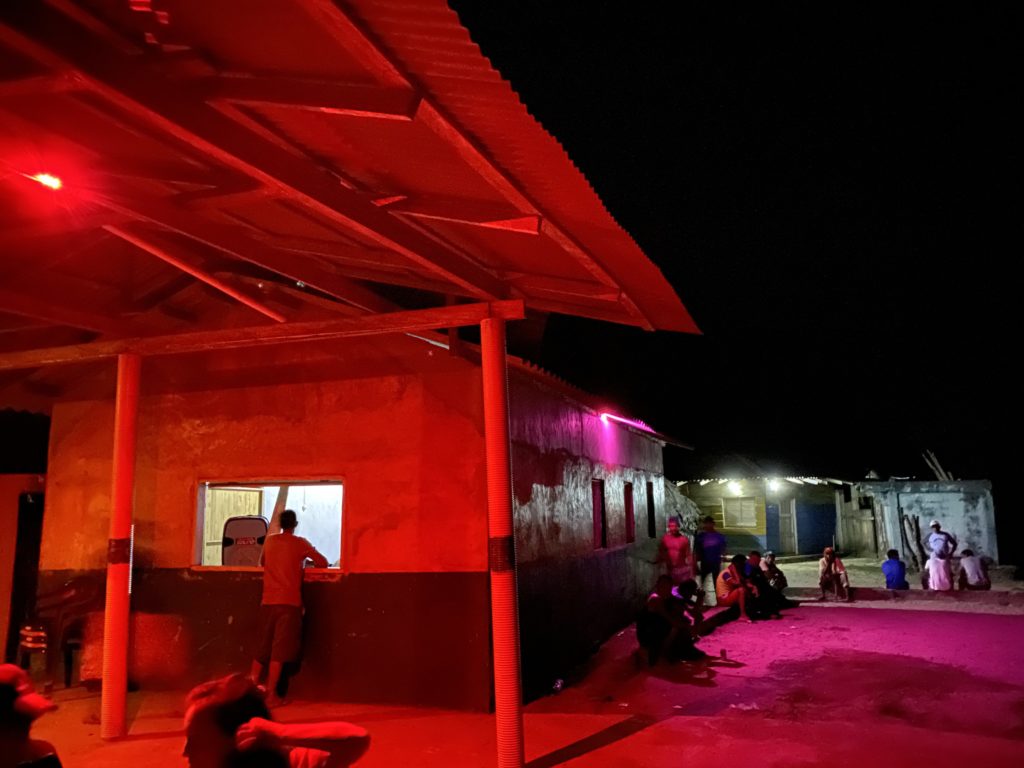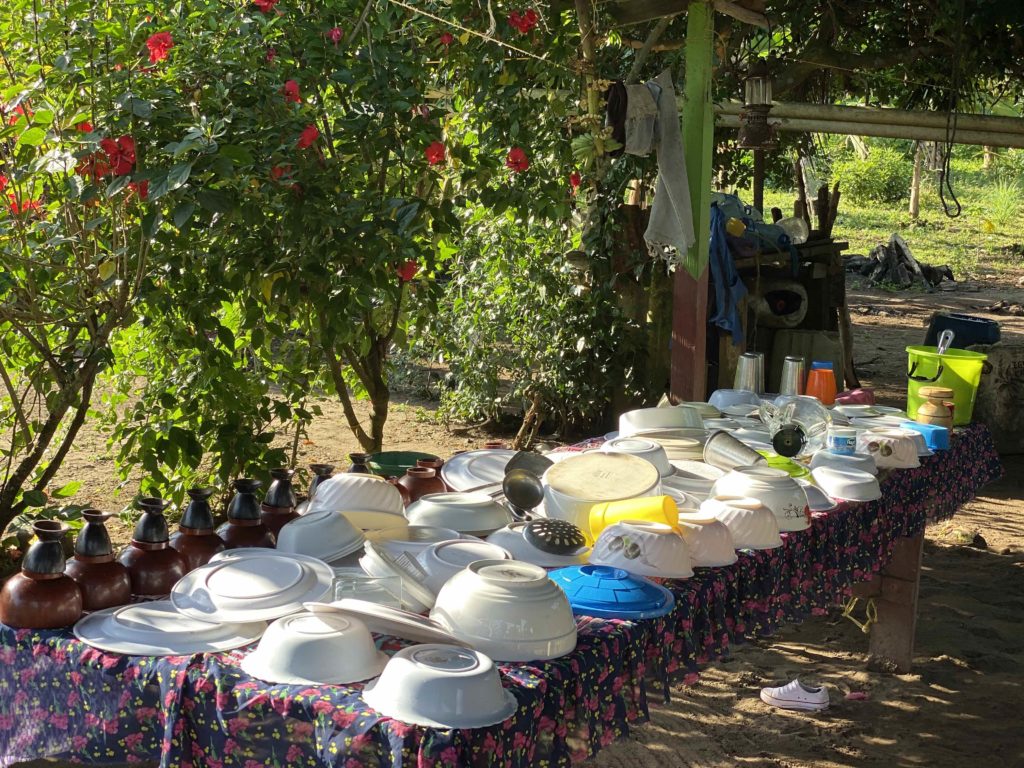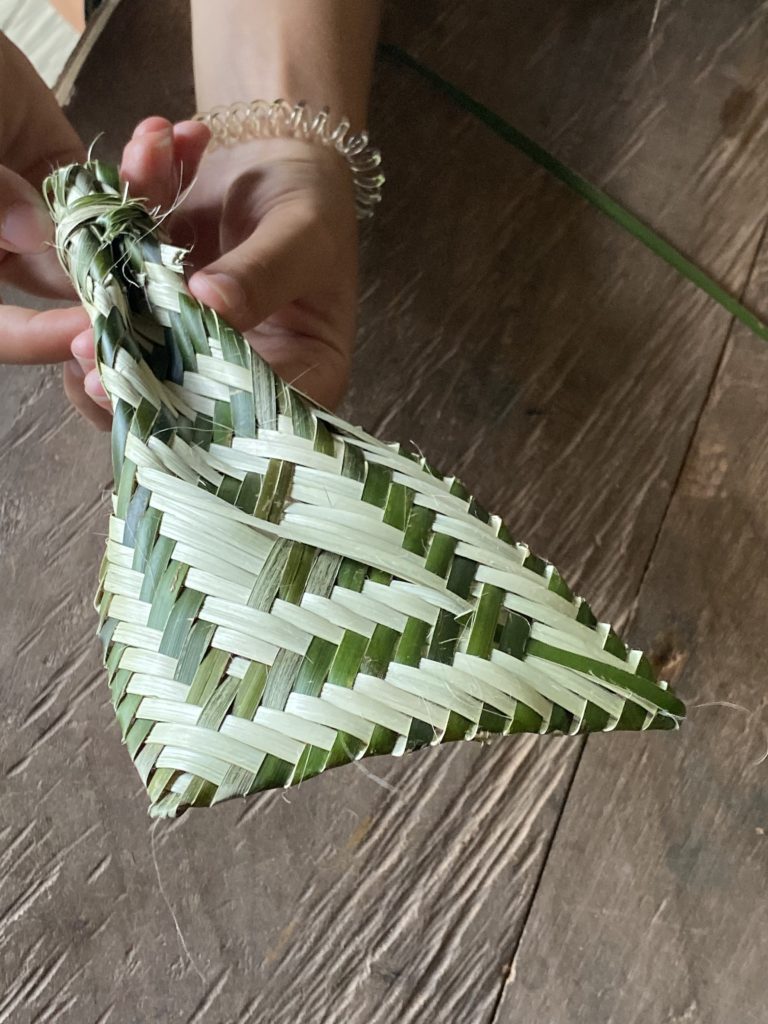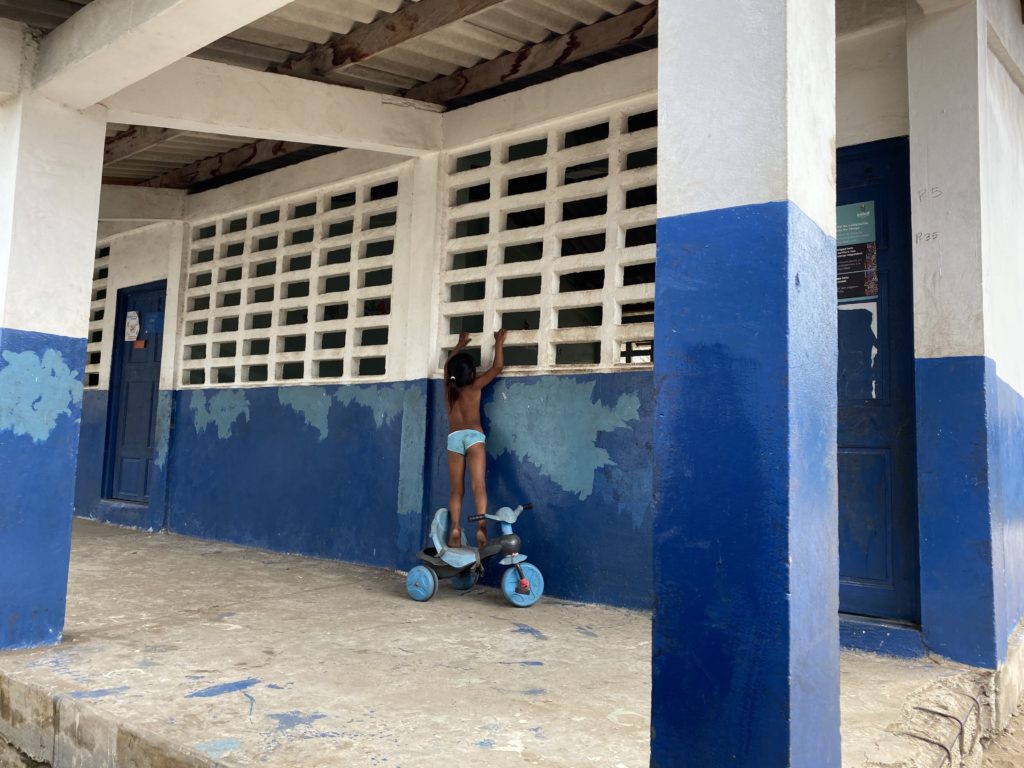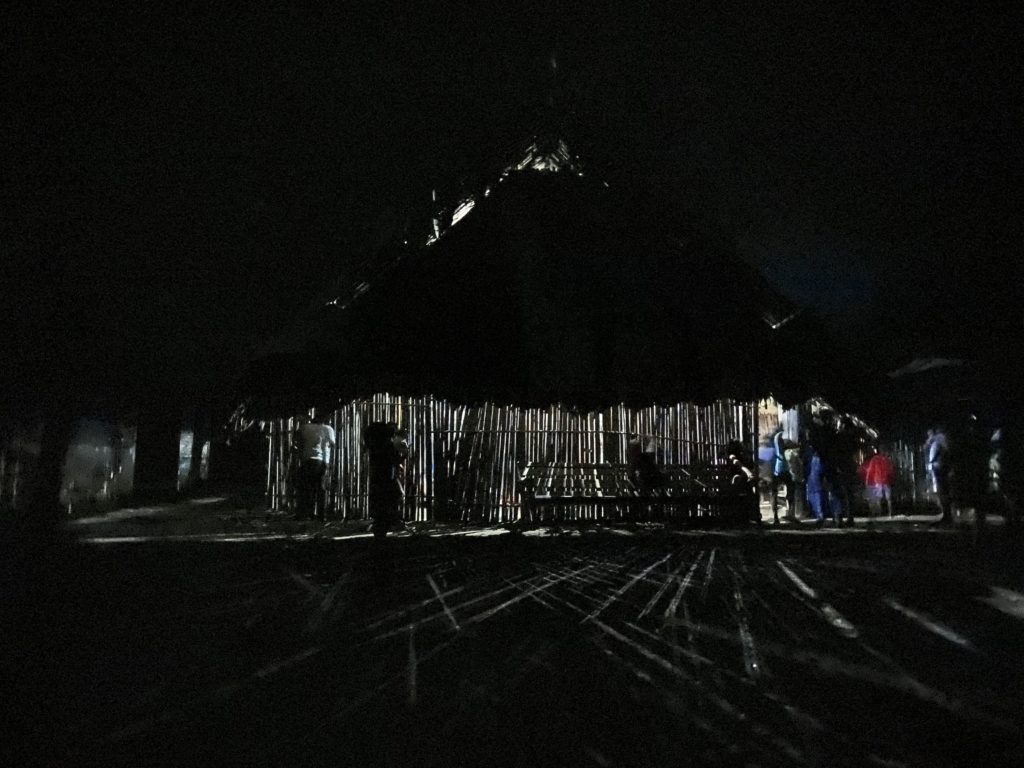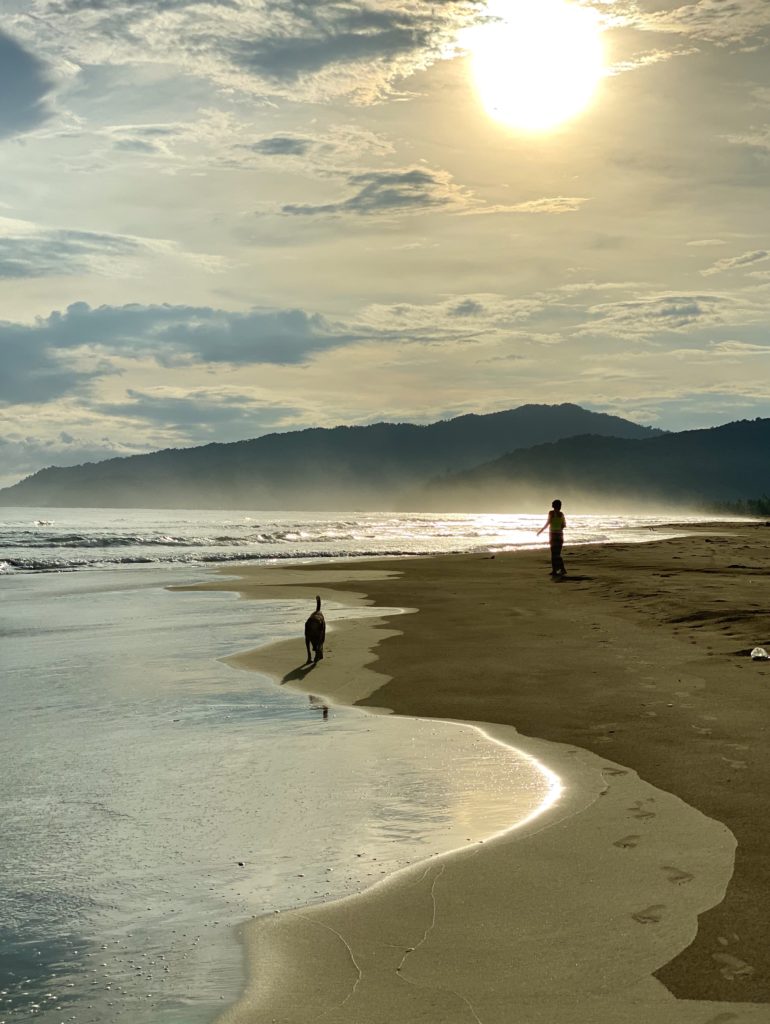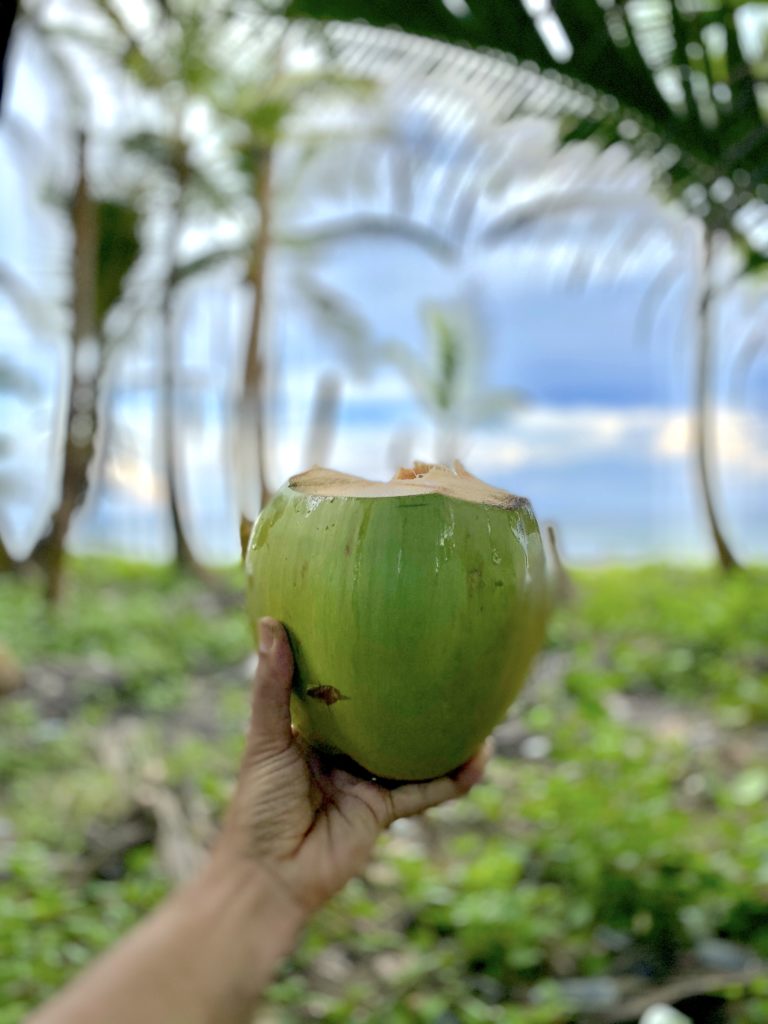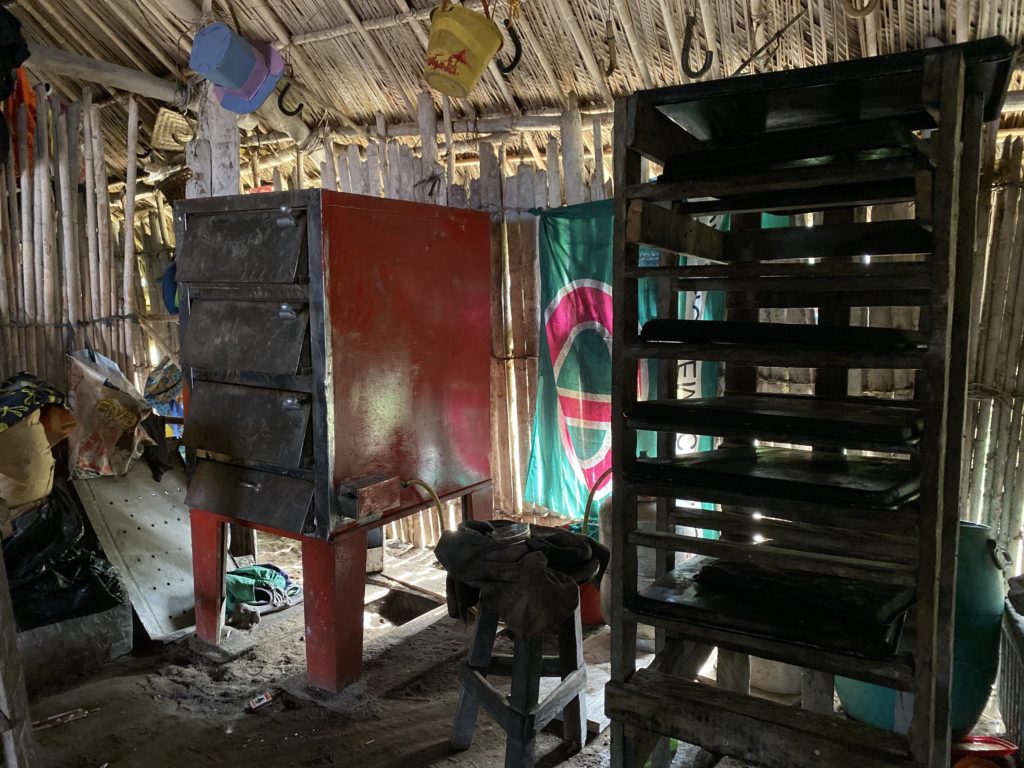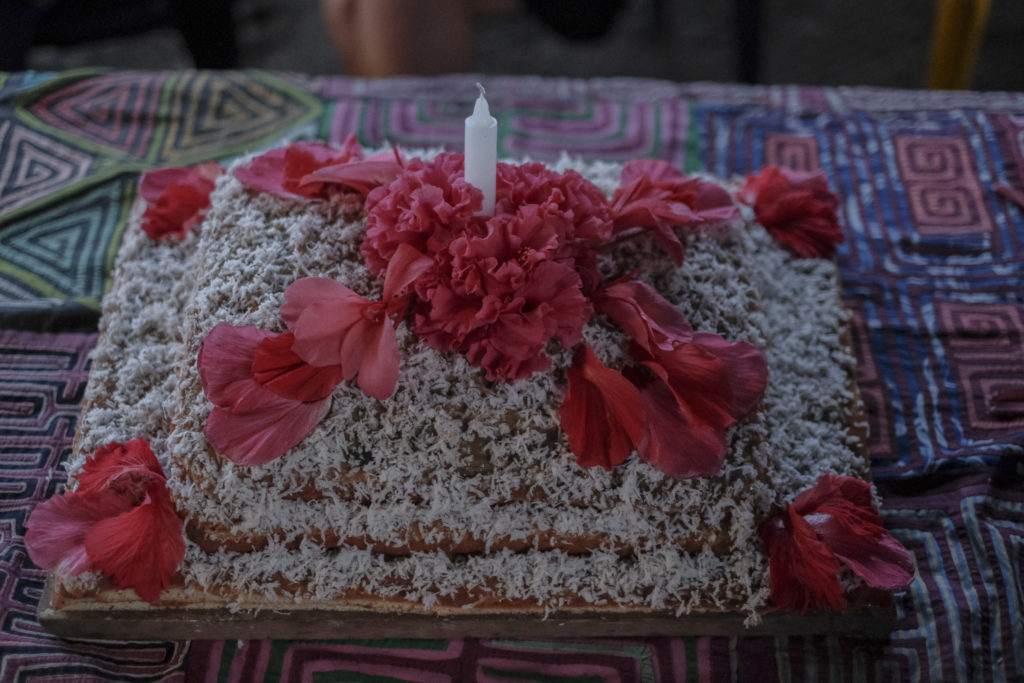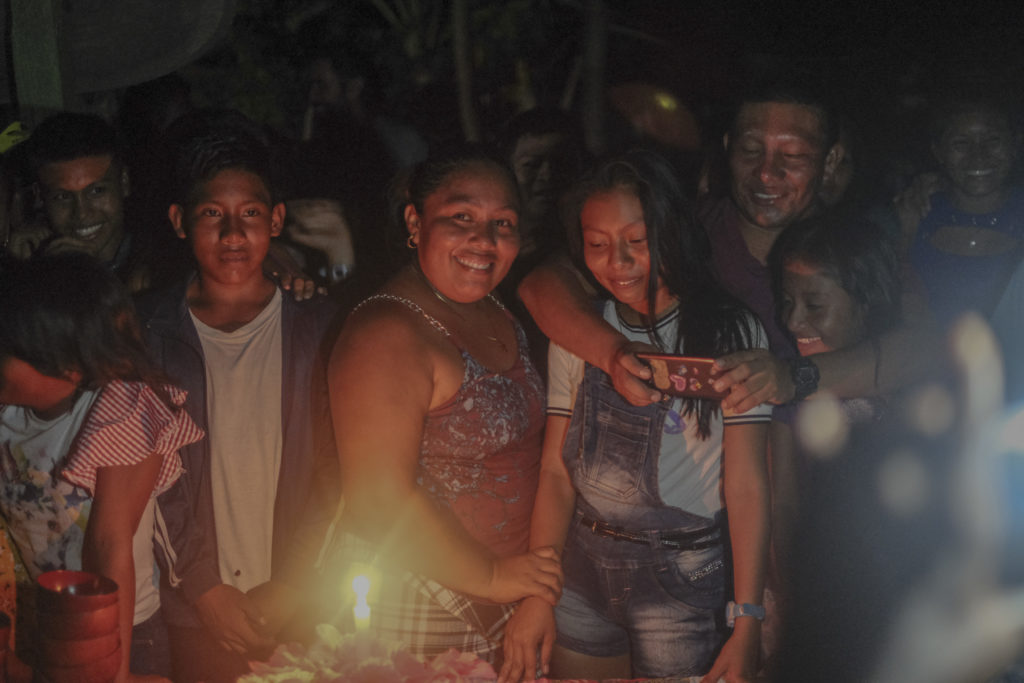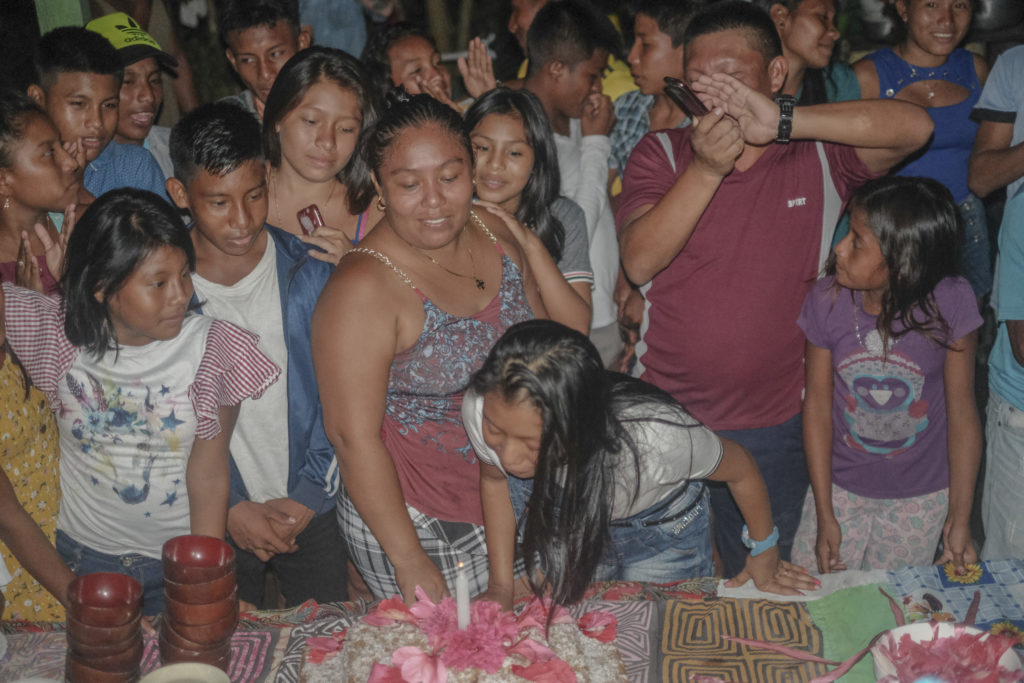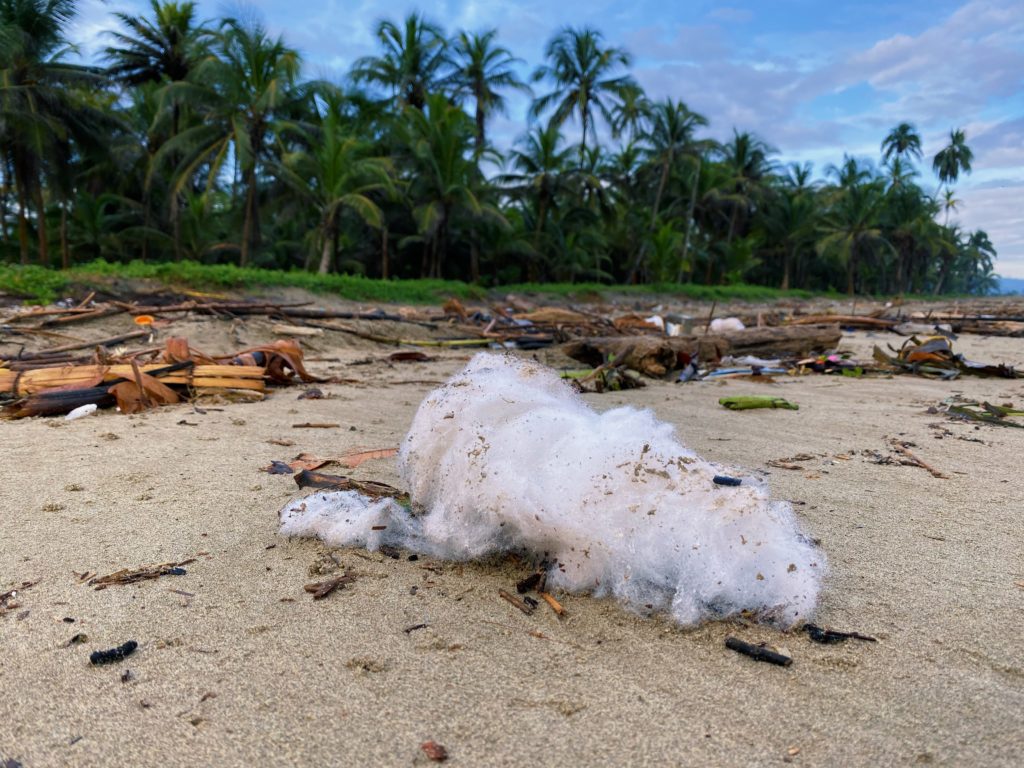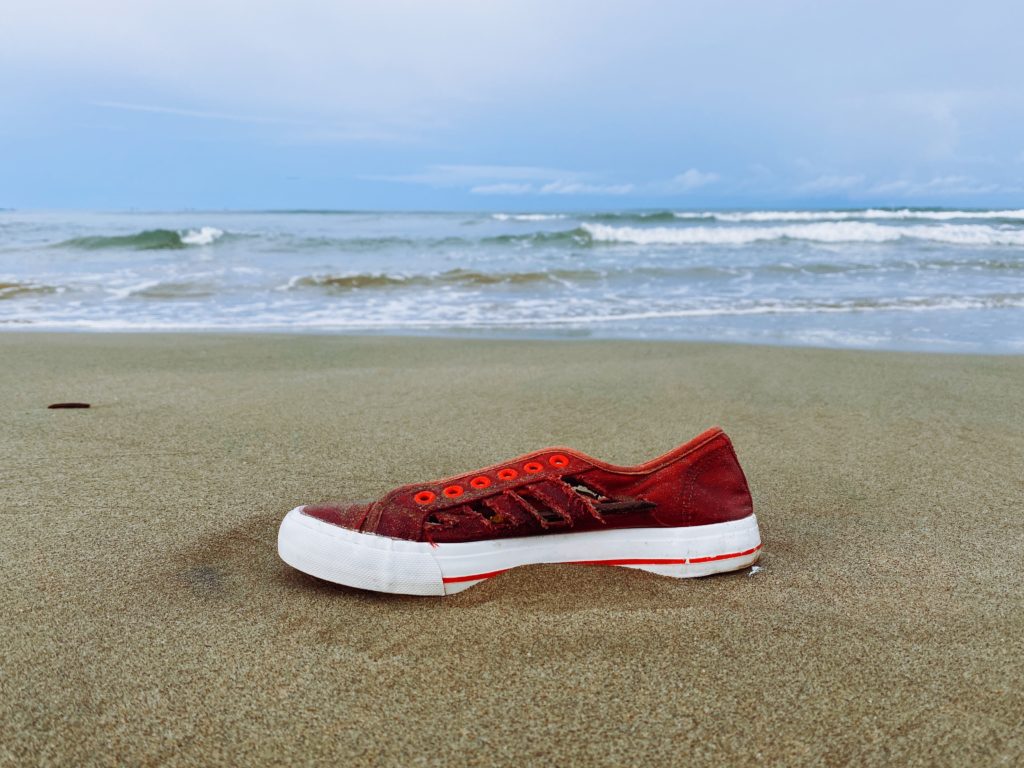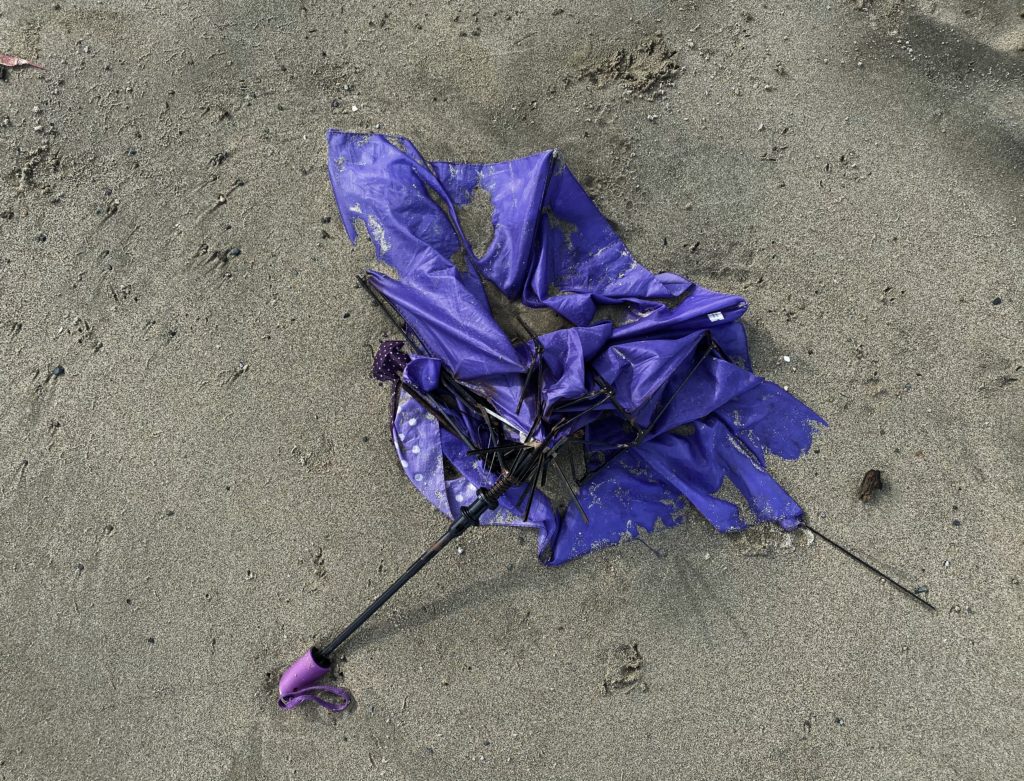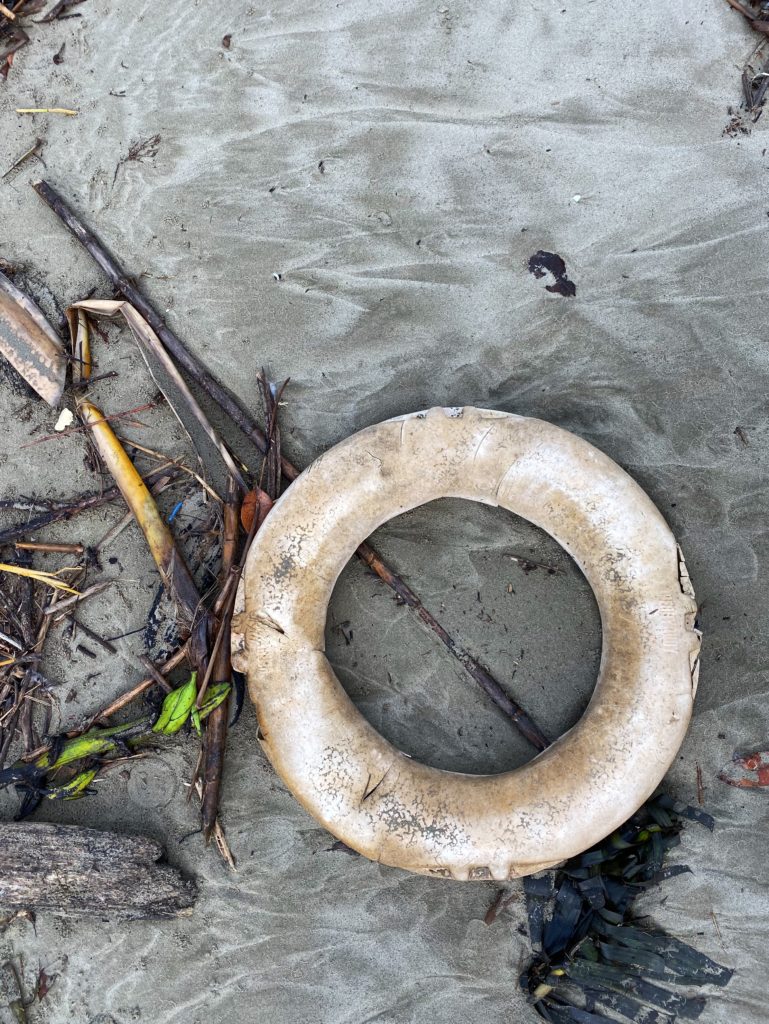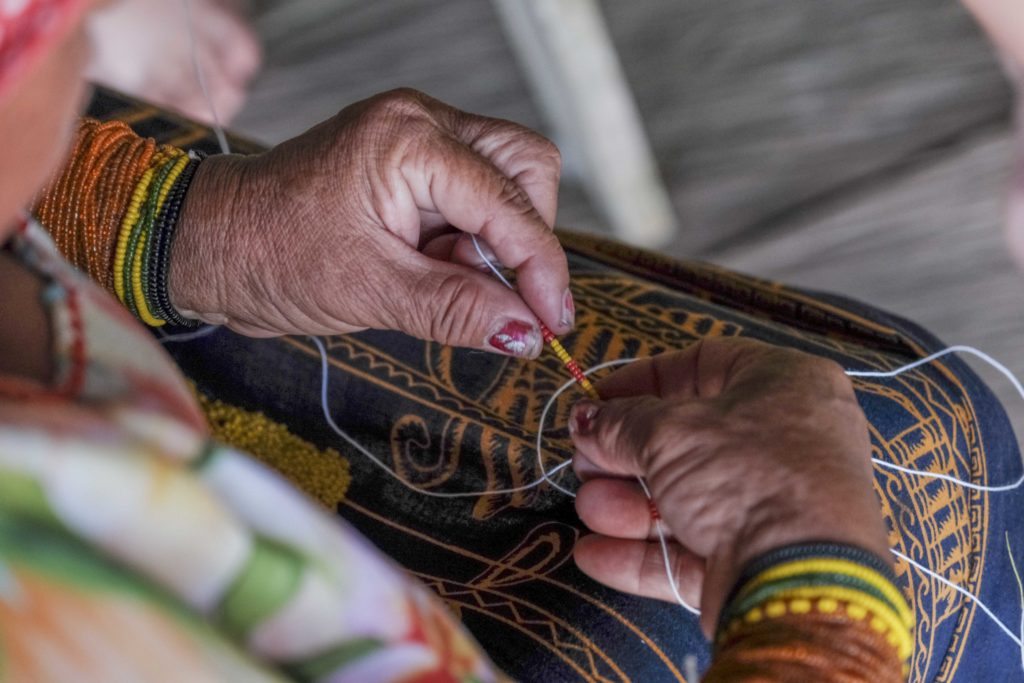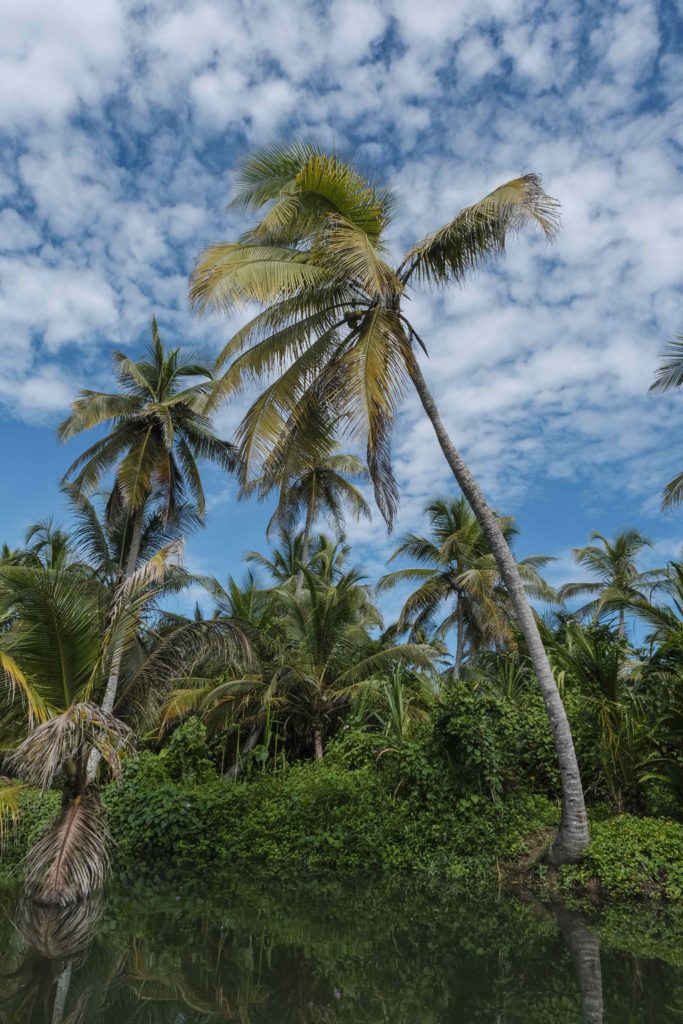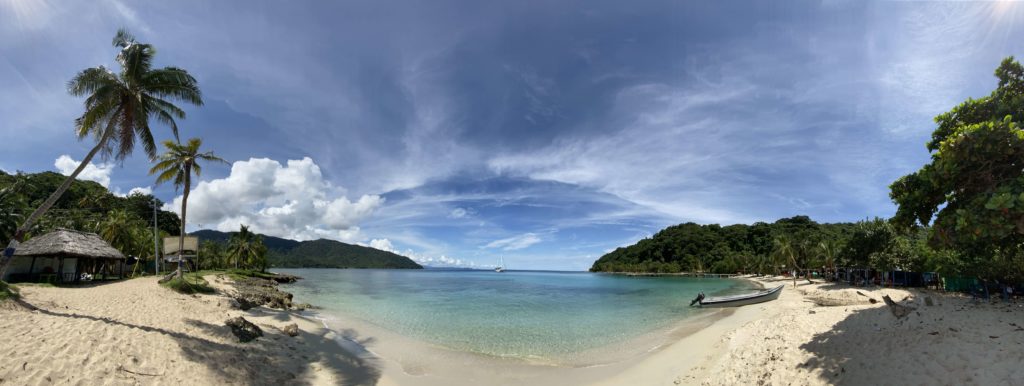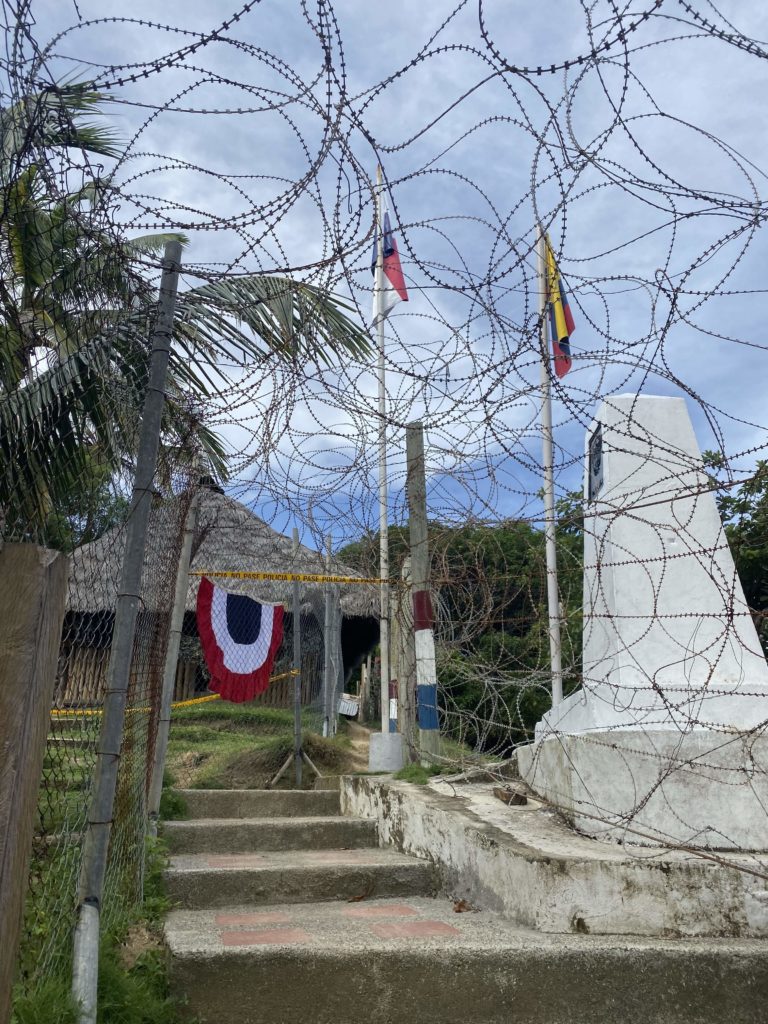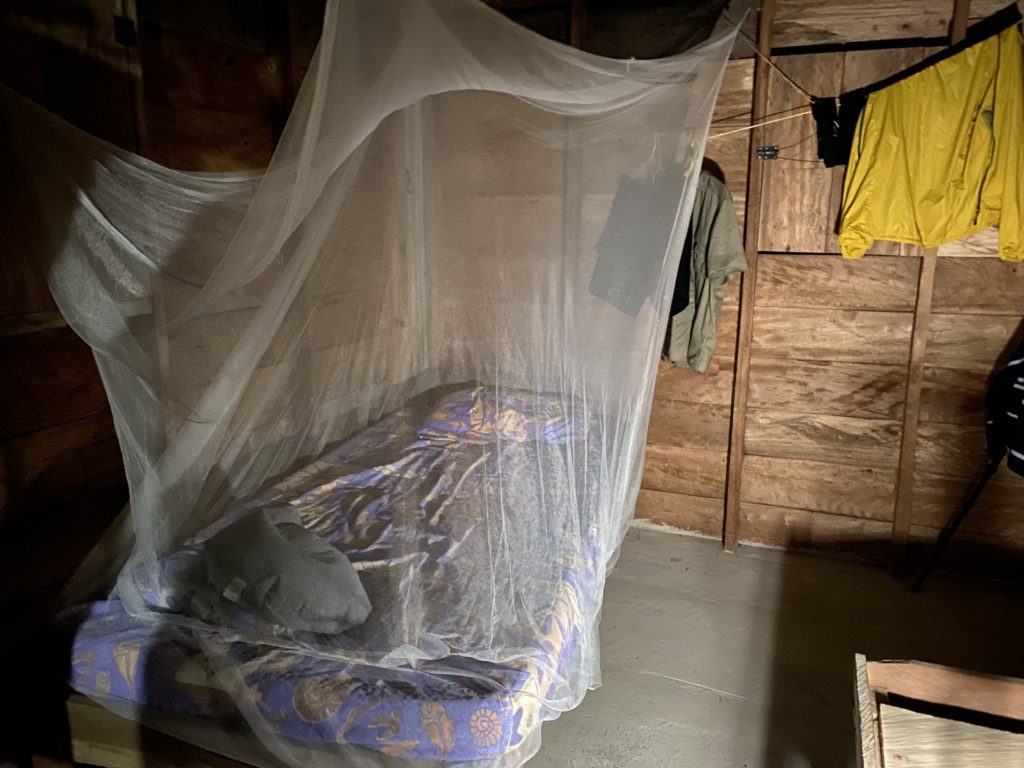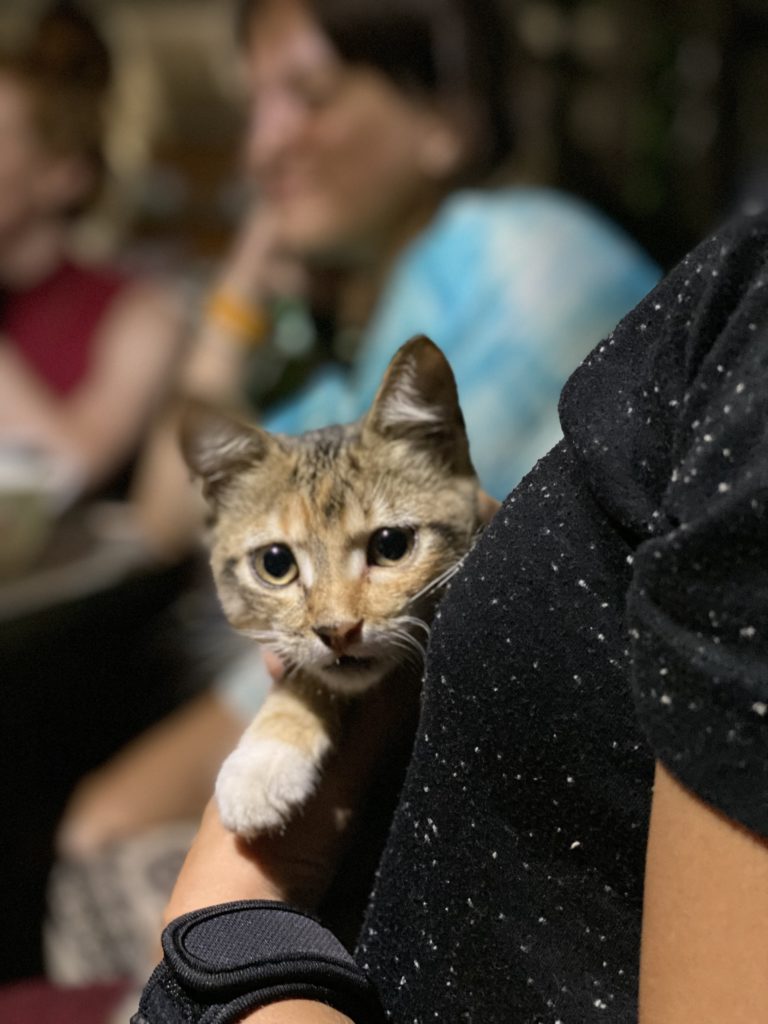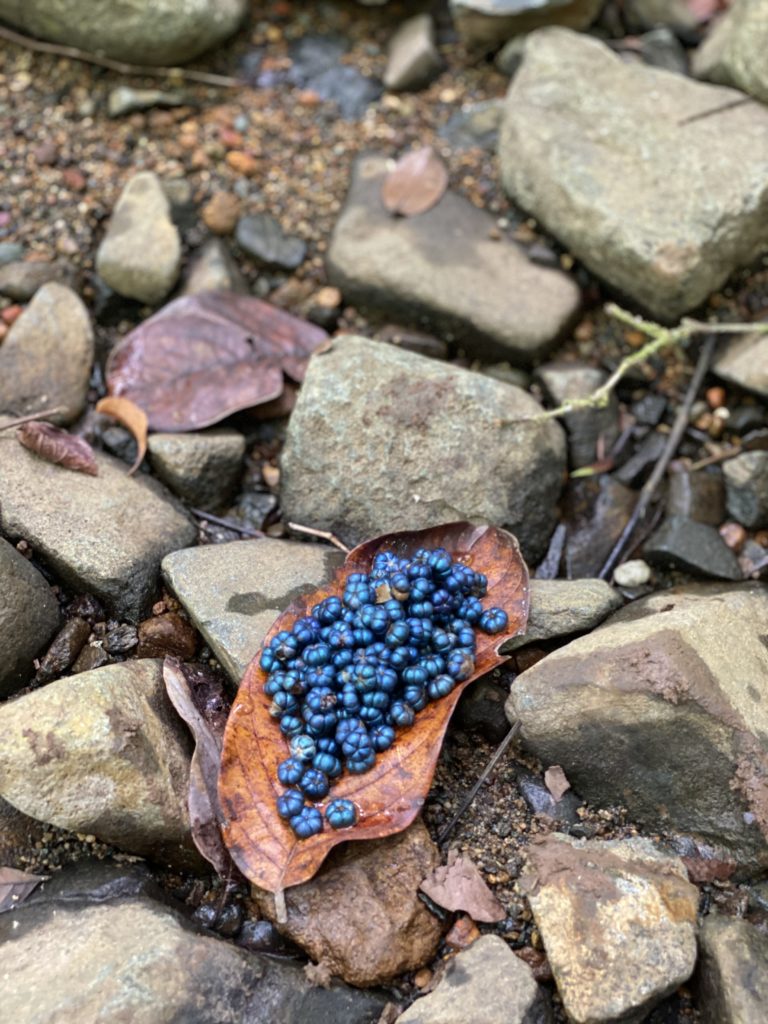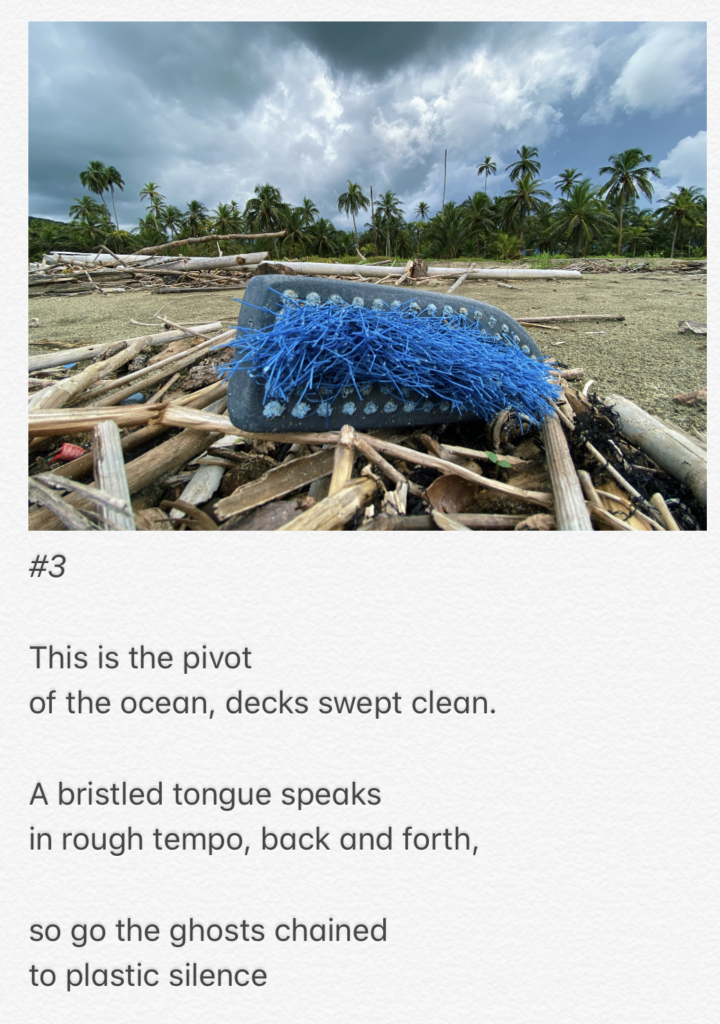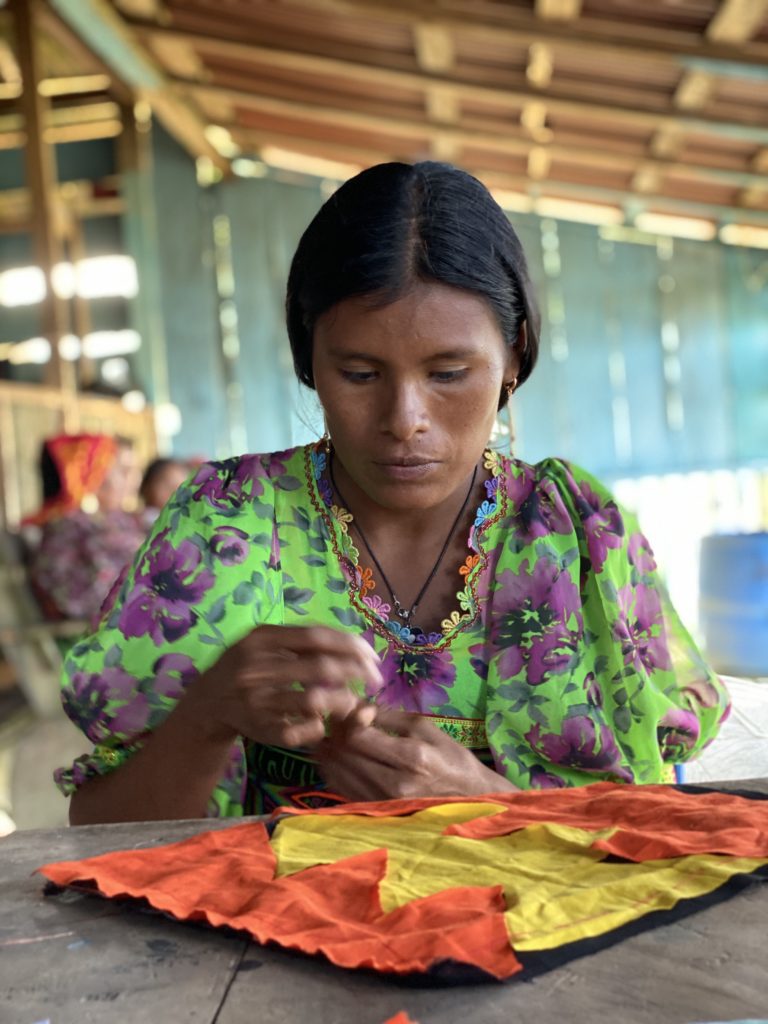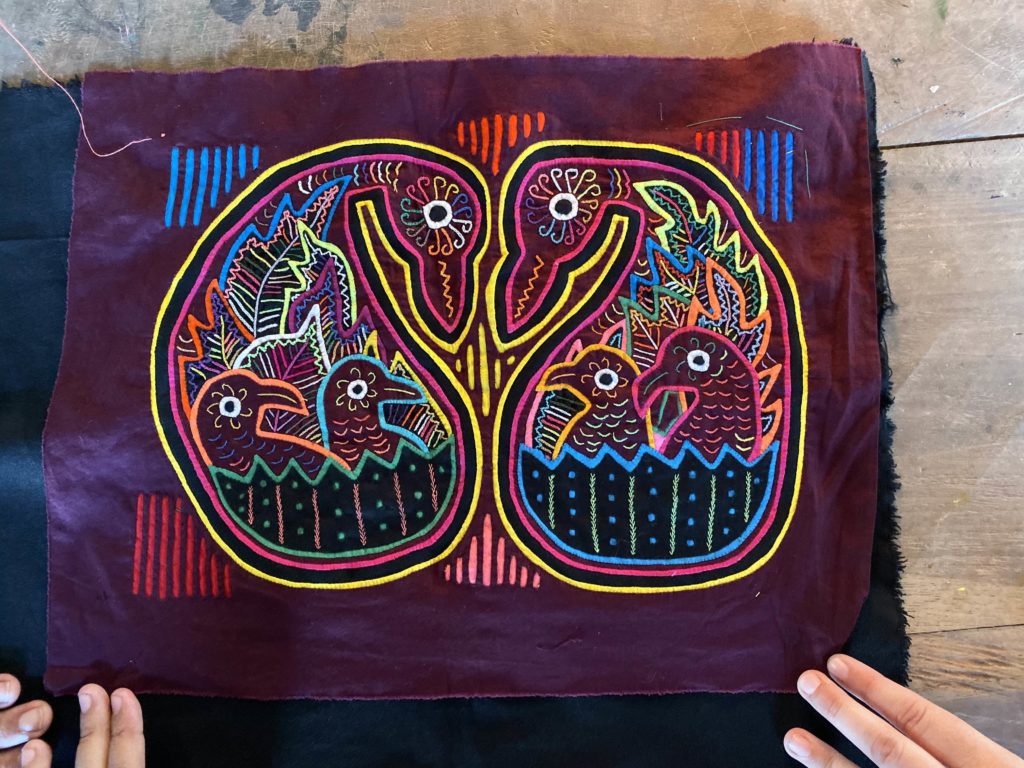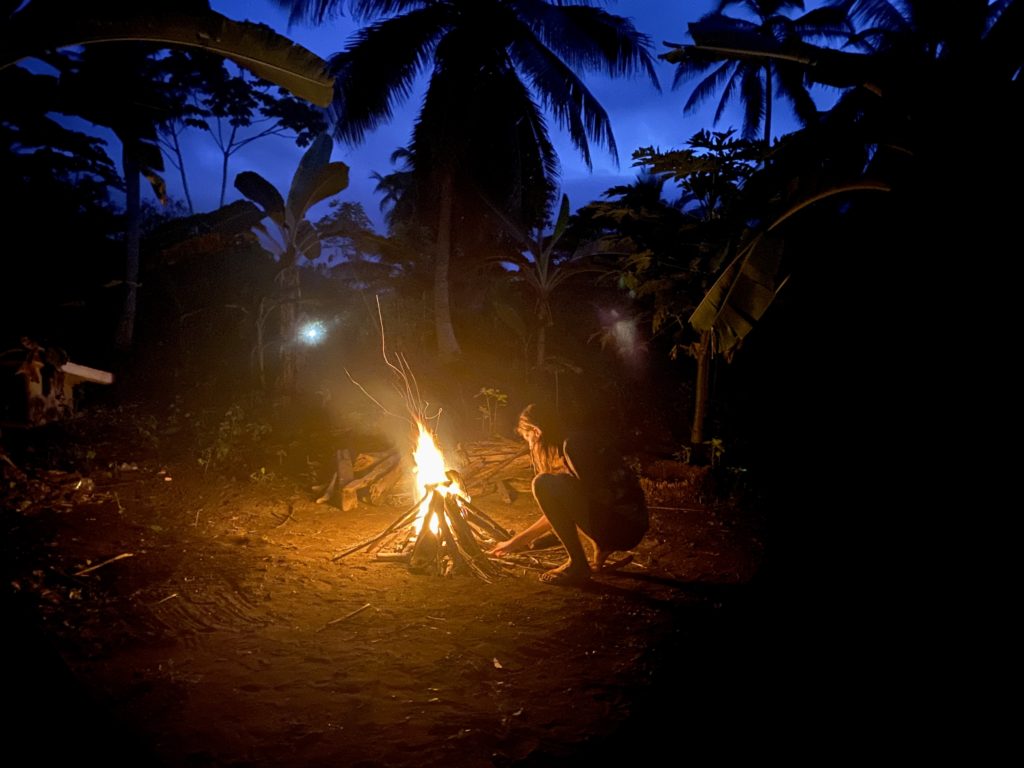There’s a poster of all the months of the year pasted on the wall in Baudeliano’s front porch, with the Guna names written below. Nacho helps to translate:
Yornii– the beginnings of things
Arrinii – the arrival of the iguanas
Dilanii – seeds from a palm
Olornii – cicadas that predict the sound of rain and herald the start of the planting season
Yaugnii – the arrival of the turtles, attracted by the moon
Masarnii– wood that the Guna use to build houses
Bunurnii – blossoming of ceremonial flowers
Gignii– the sea that recedes
Apinii – another medicinal flower
Guiblonii – the ocean floods, butterflies and birds migrate
Inanii – the returning birds
Bardunnii– flowers used to heal
The names we use are based on the planets. The Guna base their names on the phases of the moon, which is seen as feminine symbol, and the seasons.
Luz drinks mate every morning. She has brought bags of it over. It’s a kind of tea, but very strong and there’s a technique to steeping it. She tops it up ever so often with hot water to ensure the strength and consistency remain. She has a special mate cup and a straw made completely of silver, which doesn’t colour the taste of the mate.
Caroline isn’t feeling so well. It was probably a spell of being exposed to pretty intense heat yesterday. She has no appetite and rests in the house while we go to another beach. The weather plus the mozzies and other small biting flies can be harsh.
In the boat, I start talking about how Singapore has denied itself as an island, with its intimations of a slow, idyllic life. We eradicated the kampungs, terraformed the landscape and even subjugated our outlying islands, merging them or reducing them to landfill. I wonder how villagers who used to live on Pulau Semakau feel about how their island is now a heaped pile of trash. We are City. A city breathing in the state of its reinvention, or maybe this is who we really are. We are no island paradise; we are a business hub. If you want an island, you fly elsewhere for the weekend. On weekdays, you work to pleasure those who are constantly remaking the city in all of its imagined ideological flex; through the external and internal landscape. For we have denied the old roads inside of us too. Forgotten languages, dialects, habits, rituals, ceremonies. Things that ground us to earth, to history. Instead, we are taught to yearn after the gods of capitalism, a faceless thing that is no real god, but a bottomless greed that never stops demanding our worship. We have lost our truest shape, and for what?
This beach has very different vegetation inland from yesterday’s beach, which was on the edge of the jungle. This fronts a sprawling coconut plantation. But there is a strange fruit that looks like a small sour sop that grows here. It isn’t edible, but the fruit can be used for shampoo and for burns. It’s incredible how people have figured these things out. Imagine the process of trial and error!
Snorkeling here is pretty satisfying. There are hardly any shells here, but the water is less choppy and I manage to film a bunch of pretty fishes and some coral that are bunched around a large rock. The world is so different underwater. I can completely understand why we are so taken with it, and how people are addicted to diving. It is escape and meditation, a kind of contemplation of a natural state (if you ignore the odd plastic bag and container drifting by). A jellyfish bobs in front of me. I instinctively start to reach out for it, something unknown, tantalizing, then stop short. It drifts away, heedless.
Over lunch, we are joking about how Maria has sewn a strip of mola with a crab motif, but no she didn’t just sew it, she made the tablecloth the chair, the table, even. Overnight! And Luis says that we are dreaming rather than just inventing. But it is also a nod to the incredible skill of the Guna. They build their own houses. They sew their own clothes. Of course, they aren’t entirely self-sufficient, but they won’t starve or be homeless either. I would probably not last a week out here in this terrain. All my skills are honed to thinking and reflecting whatever I see. I am dreaming against another reality.

Out of nowhere Bernie says, I think I am made out of bites. And all of us agree. The bites burn. They are a constant presence, a reminder of our place as strangers here.
When we return to Armila, a soldier waits for us holding a piece of paper, the best kind of weapon. He is probably tracking the visitors that are coming in for the chicha ceremony.

Nachito is all of three years old but he is already so intent on possessing. He lords over the cat and proudly leads the dog around on his leash, proclaiming, ‘mi perro’ (my dog). But do we ever really own ourselves? Even when we are fully grown, we are expected to own up, to own this. To own is to possess something tangible, of value. We own houses, cars. Companies. We used to own people, too. But do we ever really own ourselves? What does that mean? I’m in a conversation with Caroline and Maria about this. Maria offers an example of two men who are the only permanent residents on a small island off Iceland. They absolutely hate each other’s guts but are intent to remain separate, cut off because they each believe they own their individual right to anger and isolation. And Caroline recalls that a few years ago, she used to see how in the alley behind her row house how a woman would come and break up an entire loaf of bread each morning to feed the birds. And as soon as she had scattered the bread and went back in, her neighbour would open her door and let her fat basset hound out. He would waddle over and hoover up all of the bread. I suppose that is also way of owning space, by contesting it in a passive fashion.
Today I help Luis to prepare dinner. We use what we have, which changes every day. We also try to vary the routine. But it also depends on how imaginative people are. I just help him dice carrots and cucumbers. We make vegetarian pasta with a small topping of courgette in lemon and balsamic. The pasta is barely enough, but we used up all three packets. All of us are always hungry here, despite the fact that I hardly eat carbs in Singapore for dinner. Coffee is a large pot with one packet of coffee powder and Luis cuts a swathe of lemongrass from Nacho’s garden for the tea. It’s as organic as they come.
Various activities for the chicha ceremony start early tomorrow and will not stop until midday on Saturday. There’s always going to be something going on somewhere.



